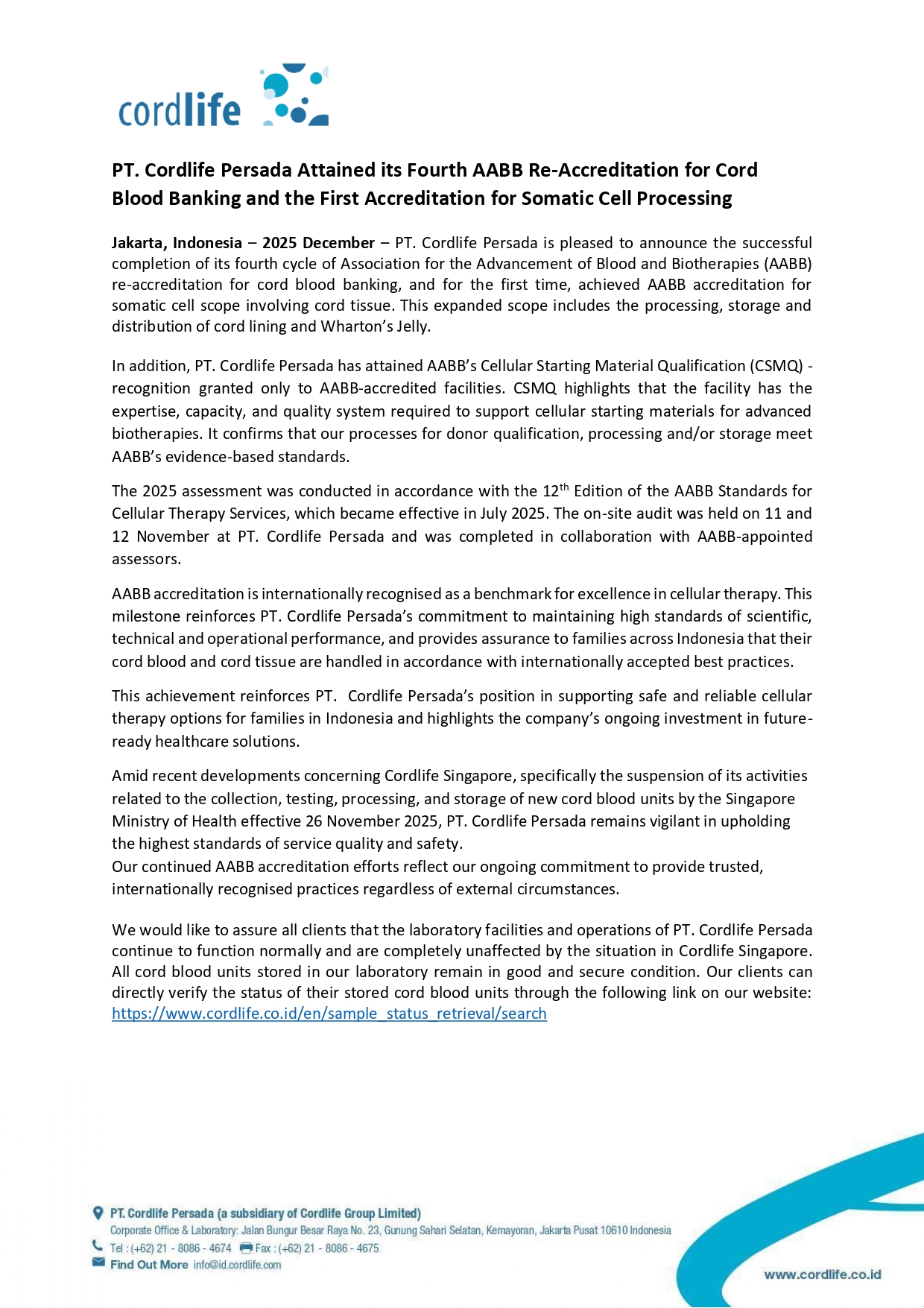
Cord blood stem cells are at the forefront of one of the most fascinating and revolutionary areas of medicine today.

Quick facts about Umbilical Cord Blood Stem Cells

Youngest & most potent adult stem cells

More than 801diseases including leukemia and other blood cancers can be treated with stem cells, such as those found in the umbilical cord blood.

Individuals may need stem cell transplant in their lifetime.

Easy and Painless Collection from Umbilical Cord

Cord Blood Unit is readily available

Treatment Type
Standard treatment: blood,
immune and metabolic disorders
Potential treatment: cerebral
palsy, autism, spinal cord injury

Odds of having a stem cell transplant by age 20 is 1 in 16662
60,0003

Cord Blood Transplants Worldwide
Your baby’s stem cells are a perfect match4 for him or her.
Siblings and first degree family members have a high chance of a match with the stem cells.

Save your baby's cord blood now
to give your child access to his/her own stem cells.
Cryopreserved exclusively for your own family
Your baby’s cord blood will be kept solely for your family, and we will conduct regular checks to ensure that it remains in good condition throughout the storage period.
Retrieve whenever you need
If the cord blood is required for a treatment, Cordlife will provide one-time payment of up to SGD50,000 to partially cover medical costs of transplantation for the child whose cord blood unit is stored (autologous use), the child’s biological siblings, biological parents or biological grandparents applicable for use in standard treatment at any accredited hospital in the Philippines.
Insurance-backed transplant coverage
We've partnered with an insurance company to help you with medical expenses in the unfortunate event of a cord blood transplant, relieving your financial burdens during this difficult time.

Why do parents save their baby's umbilical cord blood, cord tissue and cord lining?

Rich source of stem cells
Your baby’s umbilical cord has the youngest and most active stem cells compared with other stem cell sources such as embryo, bone marrow, and peripheral blood.

Proven use in transplants
More than 80 diseases can potentially be treated with cord blood, and 60,000 transplants have taken place worldwide.

Untapped clinical potential
Researchers all over the world are learning how to use stem cells to treat more diseases and repair damaged tissue or organs.

Treatment options for the family
The stem cells you stored are a perfect match for your baby, and they could be used to treat other members of your family.

Readily available for a lifetime
Stem cells can be kept indefinitely if they are properly stored, and you can retrieve them whenever you need them.
Sources
- Diseases treated page. Parent’s Guide to Cord Blood Foundation. http://parentsguidecordblood.org/diseases. Accessed February 1, 2023
- Nietfeld JJ, Pasquini MC, Logan BR, et al. (2008). Biology of Blood and Marrow Transplantation. 14:316-322.
- Cord Blood Association. Cord Blood Editiorial Background and Fact Sheet. https://cord.memberclicks.net/assets/docs/Fact_Sheet.pdf. Published December 2012. Accessed December 12, 2023.
